Lines Rocking Horse history is a 100 year saga fraught with family disagreement and interrupted by war.
George Lines set up in premises near Kings Cross London around 1860 producing wooden toys and baby carriages, and in 1876 was joined by his younger brother Joseph who had toy trade experience and great business acumen.
Together they founded G & J Lines, initially trading out of the Caledonian Road ‘Steam Works’ and later from a number of sites around London, making G & J Lines the largest toy manufacturer in Britain. They employed a huge workforce, producing all sizes and types of wheeled and rocking horses plus a multitude of other items.
The first rocking horses to be produced would have been on bow rockers, followed by early Lines rocking horses on safety stands bearing the patent stamp 29 Jan 1880 on their base boards. This stencilled mark refers to the British patent for a swing or safety stand by an American Philip Marqua. The base boards of all rocking horses using this design were required to have the 29 Jan1880 stencil for the three year life of the patent.
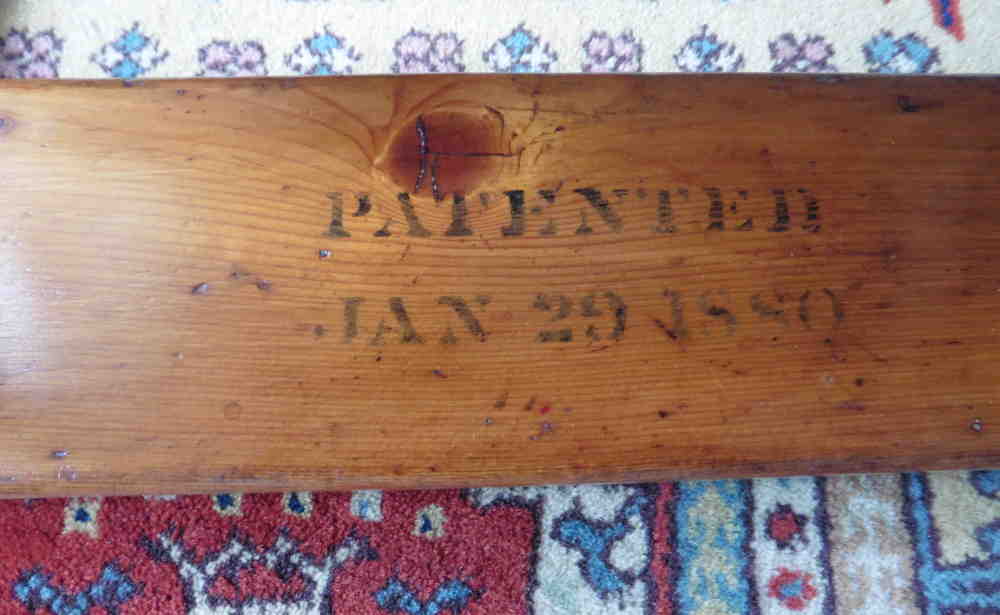
In 1887 Lines applied for an alternative to Marqua’s patent which was granted and used for their Jubilee Safety Rocking Horse. Not too many survive, since the design was more popular in America, and Lines continued to use the Marqua safety stand in preference to their own design, even after the Marqua patent expired in 1883.
Earlier Lines rocking horses on safety stands are distinguished by dished faces, long well carved ears, flared nostrils and long accentuated fetlocks. Bodies are rather heavily set, with thick necks and rather square rumps. The hoof rails have rounded ends with a short, subtle paddle shape.
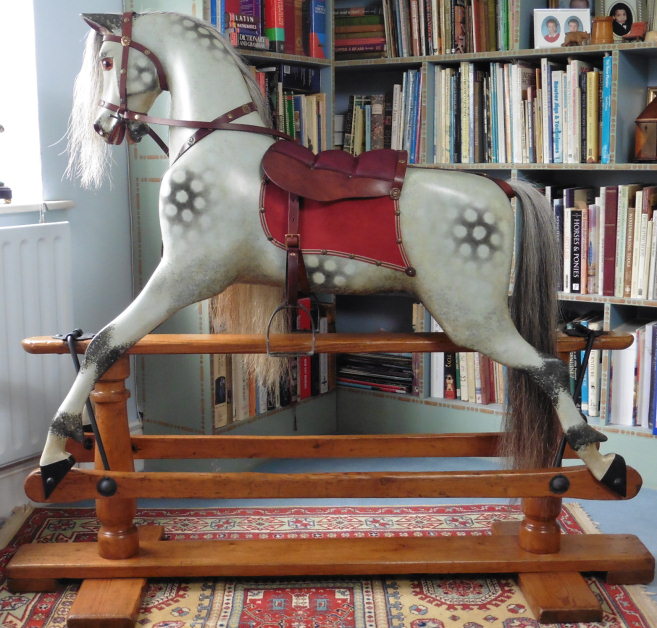
George Lines retired in the 1890’s but brother Joseph continued, along with three of his four sons, William, Walter and Arthur. In 1907 The company became G & J Lines Ltd trading under the ‘Thistle’ brand. Around 1910 horses have embossed brass chest plaques bearing a thistle in the centre, plain at first and later showing G & J L Ltd in addition. These plaques were sometimes fitted over the ends of the turned vertical columns.

Rocking horses were supplied to major retailers such as Gamages, Selfridges, Harrods and Army & Navy Stores.
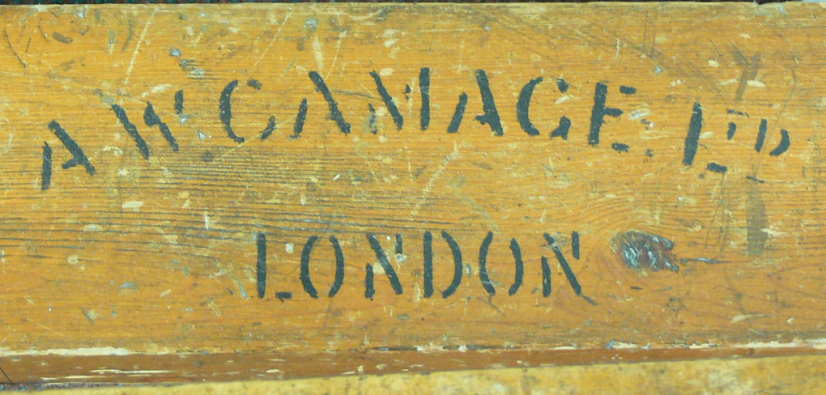
In the early 1900’s the No21 Improved Safety Rocking Horse was introduced and is distinguished by very extended legs, which could accommodate both the safety stand and bow rocker. It is a very beautiful and elegant design, particularly in the extra carved version, where there is very detailed carving to the face, neck and both front and back legs. The hoof rails are more distinctly paddle shaped than earlier models.
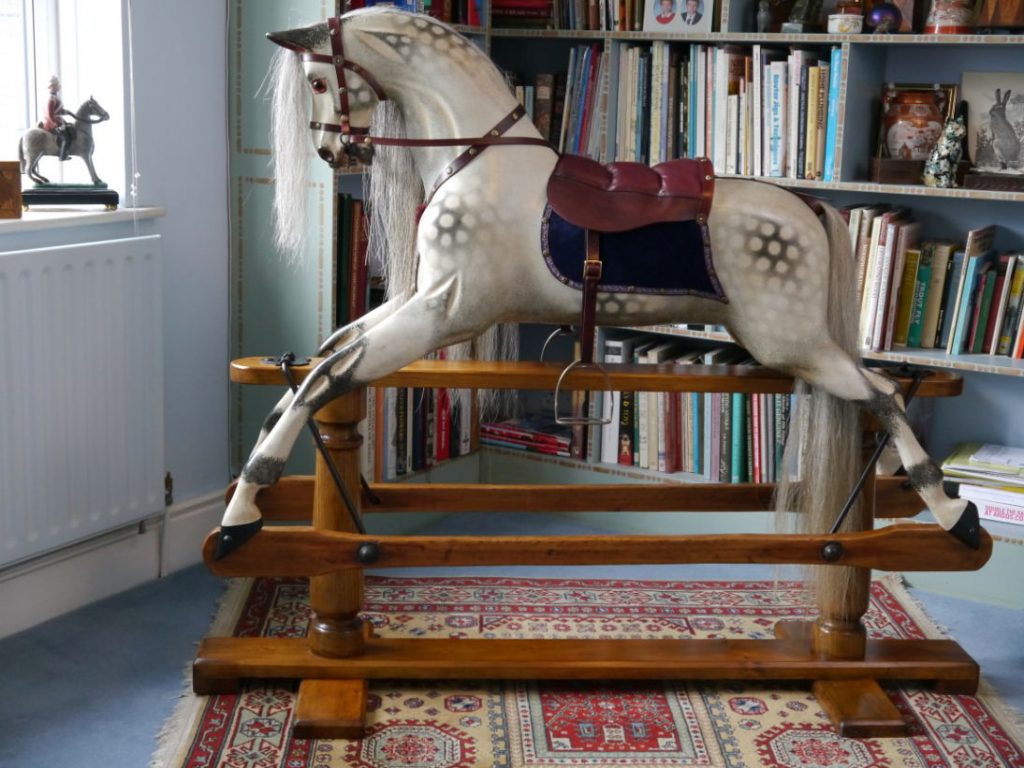
On the outbreak of war, William, too old to fight, continued with the family firm, while Walter and Arthur and a third brother, George, went off to war. During the war the brothers had seen first hand the results of mechanisation and mass production, and came home fired with a desire for change and innovation. Unfortunately Joseph was reluctant to depart from the old ways which had served him very well. Finding it impossible to change Joseph’s mind, three of the brothers William, Walter and Arthur set up their own company, Lines Bros Ltd in1919 with the trademark ‘Triangtois’ in direct competition to their father.
The Lines Brothers were immensely successful and enjoyed a period of massive expansion and great success with all manner of mass produced toys which were exported worldwide. At one stage they were the largest toy manufacturer in the world and in 1960’s acquired Meccano and Dinky Toys.
In the early years rocking horses made under the Lines Bros label were similar to those of G & J Lines, (production of the originals finished in 1932 after the death of Joseph Lines).
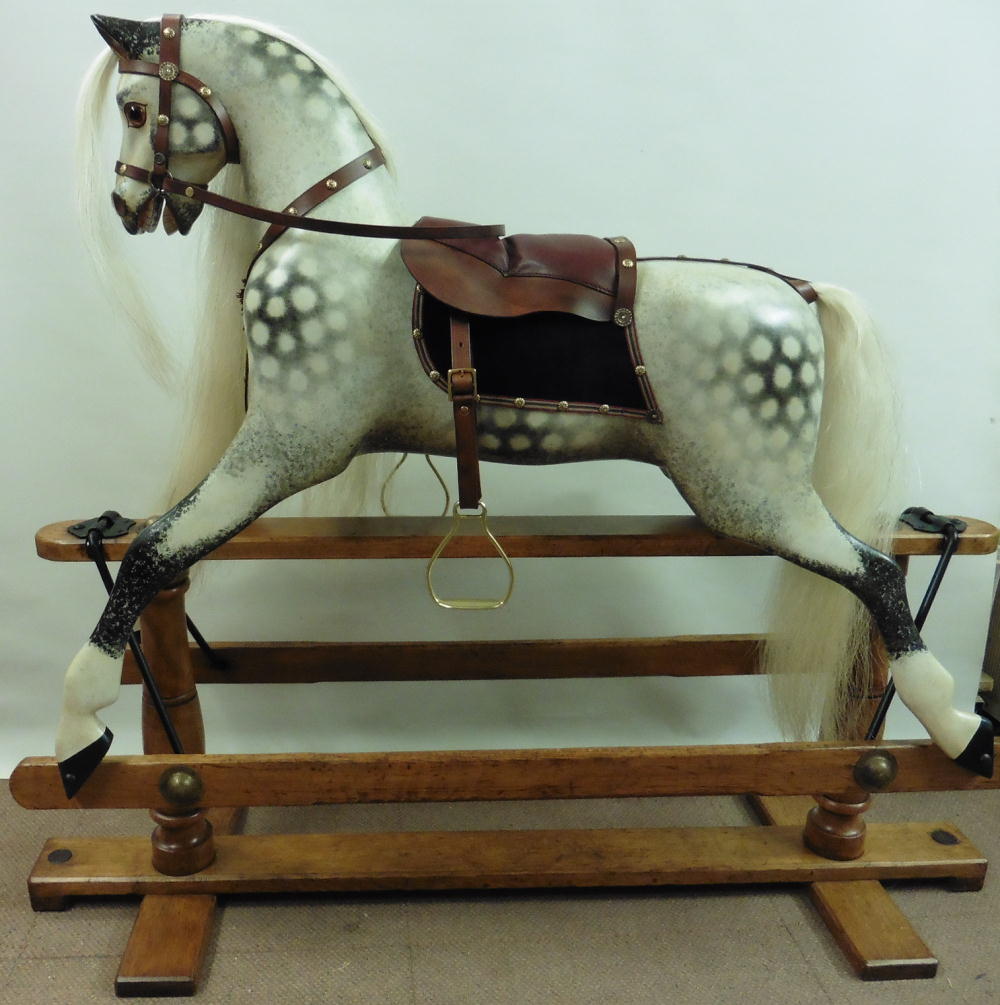
After around 1920 ‘Sportiboy’ horses were introduced with simpler carving and a different style of stand columns from the earlier horses, with a sunken bead half way up the stand column. ‘Bowler hats’ on the top of the stand covered the column spigots and the ends of the swing irons, which were first secured with split pins. Brackets, which previously had markings underneath now had the company details cast into the top surface of the bracket. The Sportiboy horses are sturdy, well shaped horses with a lot of charm, but some of the magic of the earlier more individual G & J Lines Rocking Horses has been lost.
By the 1950’s the Sportiboy Rocking Horse had been overtaken by metal and plastic rocking toys, and following too many acquisitions, and a downturn in overseas and home markets, the once buoyant, but overstretched, company went into liquidation in 1971.
Walter Lines, once the driving force of the company, died in 1972.
If, after reading this, you are thinking of buying your own Lines rocking horse then why not take a look at our antique rocking horses page where we have some fabulous ones for sale.
